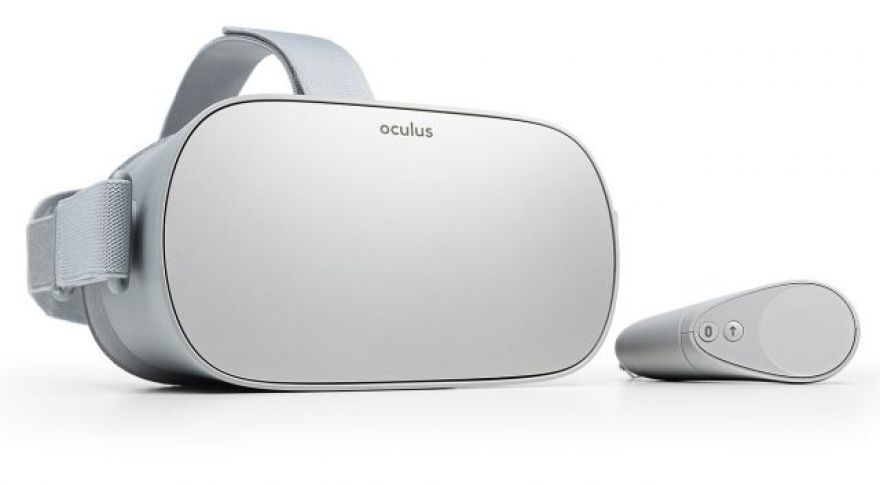
In April 2016, Amazon unveiled its first-generation Kindle Oasis, a 6-inch device with a 300 PPI screen, the same E Ink display that makes reading a Kindle more like reading a conventional book, and an asymmetrical design meant to make it easier to hold for one-handed reading. The original Oasis had a secondary battery integrated into the case. The platform’s storage offered 3GB of user-accessible space, though the first-gen Oasis did have 10 LEDs for backlighting, as opposed to 4-6 on the Kindle Paperwhite and Kindle Voyage. The company’s , helpfully named the “All-New Kindle Oasis” because apparently the Amazon dev team stole the marketing division’s funding, increases the screen size from six inches to seven, adds an IPX8 waterproof rating (the first Kindle to do so), packs on some LEDs (up to 12, from 10), a baseline 8GB of storage (7GB of this should be user-accessible based on the 3GB capability on previous 4GB Kindles), an aluminum back, and a baseline price of $250.

Over the last few years, we’ve seen an increasing number of games locking desirable content behind the digital operant conditioning chambers known as “loot boxes.” The basics of how loot boxes work are common to all games that use them. Players are presented with the opportunity to spend real money, in exchange for an in-game box containing one or more items. From here, the particulars vary. In some games, the boxes are random rewards you unlock with keys you bought with real dollars. Sometimes the boxes are free, but the keys to open them cost money. Some games also offer the opportunity to earn keys and chests by advancing through the title in the traditional fashion, or by completing in-game objectives, while others don’t.

Apple was the first smartphone maker to integrate high-quality fingerprint sensors into its phones, but it may also be the first to stop using fingerprint sensors. According to a new report from KGI analyst Ming-Chi Kuo, Apple could drop its Touch ID system completely in the next iPhone. Instead, it would rely upon Face ID, which is set to debut in the iPhone X. Apple was faced with a conundrum as the iPhone X launch approached. With the larger display, there’s no room for the traditional home button and its Touch ID sensor. Apple could have relocated the sensor to the back of the phone or done the necessary engineering to integrate it in the display panel.

For years, companies like Google and Tesla have made big promises about the future of self-driving cars. We’re told these vehicles will deliver significant advantages in safety and economy, with some even predicting the death of the personally owned vehicle as fleets of taxis will show up outside your door, whisk you to work, and come back. One bit of data that hasn’t really been talked about much is how much electricity is required to deliver these benefits. Current driverless car systems require between 2kW and 4kW of power to make the magic happen. That’s the equivalent of four to eight high-end gaming desktops inside the vehicle, chewing through an enormous amount of power.

If you’ve ever wanted to try your hands at building robots and learning to code, today’s SkillWise deal is right up your alley. For just 29 bucks, you can learn the ins and outs of creating robots using the Arduino platform. • (List price: $300) With your purchase, you’ll get these three in-depth courses: • Make an Arduino Robot (List price: $100) • Arduino Robotics with the mBot (List price: $100) • Advanced Arduino Boards and Tools (List price: $100) Put together, that’s over 22 hours worth of instruction delivered across 168 separate lessons.

Scientists have been tracking large-scale changes in the ice sheet in recent decades, but these changes are usually the result of known processes. The latest change is something tougher to explain. A giant hole the size of Lake Superior has opened up in the ice on Antarctica’s Weddell Sea, and . There’s a name for this kind of feature–an area of open water completely enclosed by sea ice is known as a “polynya.” Having a name doesn’t mean scientists have an explanation for this gap in the ice, though. Polynyas are commonly found in coastal regions of Antarctica, but this hole is far from the edge of the ice pack where the ice is much thicker, and it’s the middle of winter in Antarctica.

Over the last few years, there have been persistent concerns about Kaspersky Lab and its relationship with the Russian government. Earlier this summer, the Trump Administration announced Kaspersky’s various antivirus and security programs would no longer be allowed on any US government systems. Multiple stores have pulled their products from store shelves. It’s been clear high-level sources in the US government had serious evidence of wrongdoing, but the specifics weren’t public knowledge until yesterday. On Tuesday, the New York Times how the United States government learned one of the world’s largest antivirus providers was connected to Russian intelligence. Israeli counterintelligence officers had pulled off their own hack of Russian assets and literally watched Russian government hackers searching US-based computers for keywords and code names linked to US intelligence programs in real time.

Oculus was started as a PC-focused virtual reality platform before Facebook acquired the company, but it has since ventured into mobile VR with the Samsung Gear VR partnership. Now, Oculus is preparing its first all-in-one VR headset . It’s coming to a face near you next year for a mere $199. is positioning the Go as an easier way to get into VR, which Facebook CEO Mark Zuckerberg hopes can help the company reach the goal of 1 billion people in virtual reality. You don’t need to plug the headset into a computer like the Rift, nor do you have to dock a phone like the .

A few weeks ago, The Pirate Bay was in the news for its test-drive of a new revenue model–. At the time, the site only implemented the mining on its main page and search results; individual torrent links were not affected. Now, TPB has turned the capability back on, and plans to leave it on for the foreseeable future. Torrentfreak the miner appears to be throttled, so it won’t peg your CPU to 100 percent load. TPB appears to be working with CoinHive, based on the number of requests made to that domain. We decided to see which browsers are and aren’t affected by the mining script, with some interesting results.









